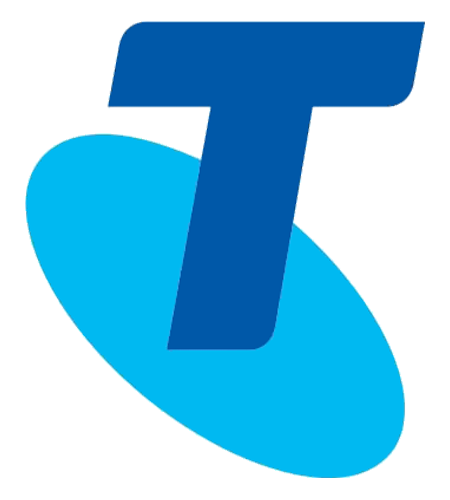Telstra today released its full year results for financial year 2016, confirming it had met guidance, and that it would return $1.5 billion to shareholders through share buy-backs in addition to the final dividend.
The Board announced a fully franked final dividend of 15.5 cents per share, bringing the total dividend for the financial year to 31.0 cents per share, up 1.6 per cent on the prior year, distributing $3.8 billion to shareholders.
In a separate announcement, Telstra confirmed it would invest up to an extra $3 billion over the next three years in a major wave of customer-focused investments in its networks of the future and digitisation.
Telstra CEO Andrew Penn said Telstra had performed well and added new customers across its key products. He said the results had been influenced by increasing competition, the changing product mix of earnings and acceleration in the rollout of the nbn™ network.
Read Also: TeleTech and Telstra Unveil New Contact Center in Pasay City
“Telstra has delivered another solid result for shareholders, growing revenue and EBITDA on a guidance basis, adding new customers and again providing consistent shareholder returns,” Penn said.
“There is no doubt that competitive intensity has increased across our segments and products. The rollout of nbn has progressed and the pace of technology innovation has continued to accelerate. This highlights the importance of our vision to become a world class technology company and our continued efforts to improve customer advocacy, drive value and growth from our core businesses and build new growth businesses.”
Improving customer advocacy
Penn said while Telstra performed well and added new customers, it had not made enough progress on improving customer experiences.
“Work still needs to be done to improve our systems and processes that can cause customer frustration and delay, and to ensure that we consistently deliver a great service experience,” he said.
“We know that customers expect more from us as their reliance on smart devices continues to grow. This is why improving the customer experience is paramount, and why network interruptions in the second half were particularly disappointing.
“As a result of these factors our overall NPS score decreased by four points year on year, although we improved advocacy with enterprise, government, wholesale and managed business customers. We continue to simplify the business and recognise the things which can frustrate customers about our products and service are often the same things adding cost to our business.”
Driving value and growth from the core
In this highly competitive environment, domestic retail mobile customer services increased by 560,000 to a total of 17.2 million services. Mobile revenue impacts included regulatory changes to voice and SMS terminating charges as well as lower international roaming charges.
Fixed revenue fell largely due to continued decline in the number of fixed voice services and impact of regulatory changes. The rate of fixed voice revenue decline was broadly maintained due to successful retention activities such as bundles. The number of customers on bundled plans increased by 322,000 to 83 per cent of the retail fixed data customer base.
Fixed data partially offset the decline in voice, with domestic retail subscriber numbers increasing by 35,000, the highest net adds in more than five years, bringing the customer total to 3.4 million.
Demand for nbn services through Telstra continued, with connections growing by 289,000 to 500,000.
Penn said Telstra’s core business was built around its networks which had received significant investment over the past year.
“During the year we upgraded 2,375 network sites to 4GX and achieved 98 per cent population coverage with 4G. We are on track to reach 99 per cent coverage by June 2017. Overall, we invested $4.0 billion in capital expenditure including our fixed and mobile networks and other works,” he said.
Building new growth businesses
Telstra’s Global Enterprise & Services business income grew 11.5 per cent, with its Network Applications and Services (NAS) business continuing to perform strongly. This includes the acquisition of Pacnet in the second half of financial year 2015.
“Our NAS business grew by 14.3 per cent and increased profitability, continuing the double digit growth of the past few years. NAS generated annual revenues in excess of $2.7 billion in FY16,” Penn said.
“We have also made good progress in our growth businesses and internationally. The successful integration of the Pacnet business over the past 15 months means Telstra has emerged as a leader in international connectivity, with the largest submarine cable network in Asia.
“Our joint ventures in China (Telstra PBS) and Indonesia (telkomtelstra) enjoyed increased demand for services and help to build Telstra’s footprint in two of the world’s largest and fastest growing technology markets. Our Telstra Health business is one of Australia’s leading providers of eHealth solutions, and in May was selected by the Commonwealth Department of Health to deliver the National Cancer Screening Register
under a five year contract.”
Outlook
In FY17 Telstra expects to deliver mid to high-single digit income growth and low to mid-single digit EBITDA growth. Free cashflow is expected to be between $3.5 billion and $4.0 billion and capital expenditure to be approximately 18 per cent of sales.
This guidance assumes wholesale product price stability and no impairments to investments, and excludes any proceeds on the sale of businesses, mergers and acquisitions and purchase of spectrum. The guidance also assumes the nbn™ rollout is in accordance with the nbn Corporate Plan 2016. Capex to sales guidance excludes externally funded capex. Guidance excludes the Ooyala impairment in FY16 and restructuring costs in FY17 of $300 million to $500 million. – BusinessNewsAsia.com
